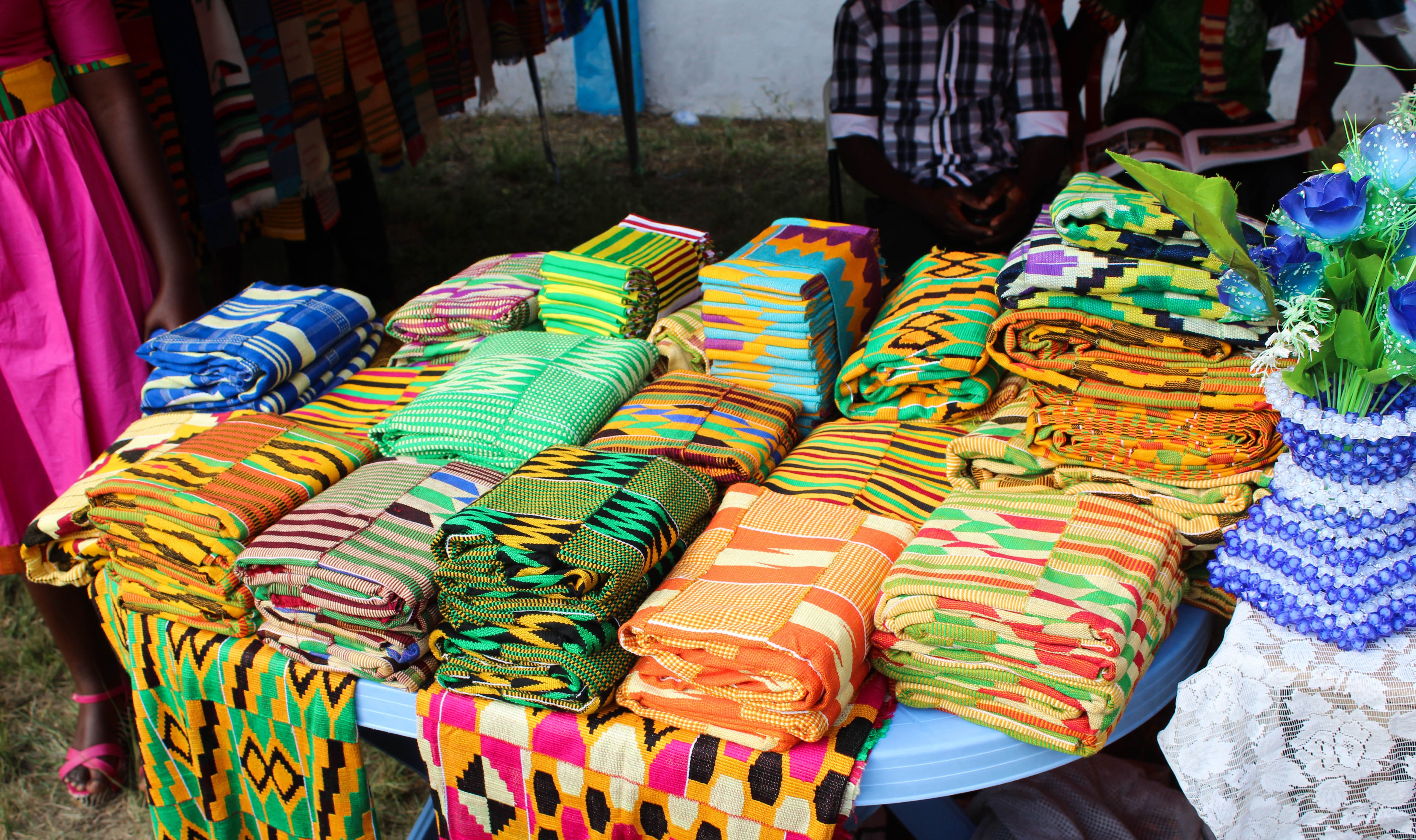In 1958, one year after gaining independence, President Kwame Nkrumah made a visit to Washington D.C. adorned in a rich kente cloth draped around his body. This touched off the use of kente among many Black Americans as it became adopted as a symbol of African history and pride. Muhammad Ali wore kente for much of the duration of his visit to Ghana in 1964. But what exactly is kente?

Kente, like all fabrics, starts out as threads, aligned on a loom and woven together. However, unlike most fabrics, kente is woven in strips, about four inches wide, and then those strips are sewn together to make a larger piece of cloth. Bright colors with high contrast are most often used and there are a variety of patterns that have different meanings.

While the Asante people are most often associated with kente, the Ewe’s lay claim to originating the cloth. Ewe oral tradition says that they brought the weaving technique through their migration from Egypt and Nigeria. During the Asante wars, some of the best Ewe weavers were captured by the Asante and that is how the Asante came to have kente. In both ethnic groups, kente was initially reserved for chiefs and royalty and worn on special occasions, however it has since spread and can be worn by laypeople, though it is still often reserved for special occasions.

Six yards of kente cloth goes for around 700 GHS (about 170 USD at the time of writing). There are numerous places around Accra and Ghana to purchase some, though you may be interested in visiting the annual Kente Festival in Volta region that happens each July.

